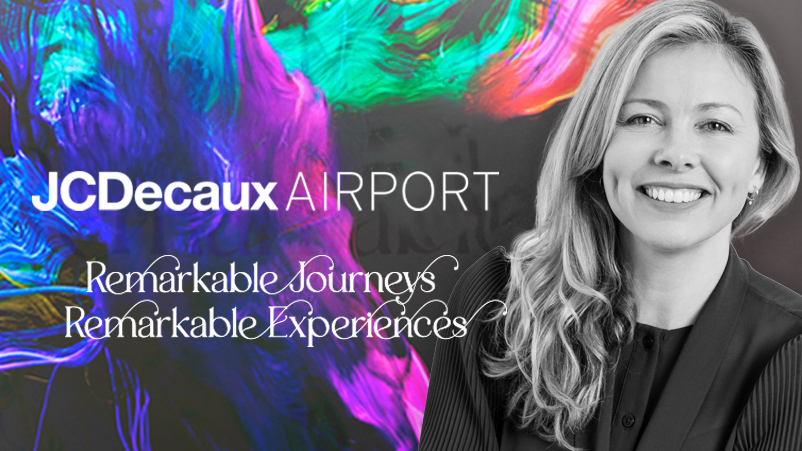Next best action: ANZ makes tech bets pay as app engagement soars – smarter attribution now in crosshairs

ANZ Bank's Karan Mehta and Ben Steinberg
Rather than loading up its already substantial technology debt, ANZ Bank made a strategic decision at the start of the decade to take a (mostly) greenfields approach to ANZ Plus, its app-driven mobile banking service and the future direction of the bank. Increased competition from fintechs, a banking Royal Commission that was scathing of the sector, and customers demanding more control and transparency all factored into the decision. And that choice also allows it to utilise a 'next best action' platform – a cornerstone of real-time decision-making – to drive adoption and engagement, says the bank's marketing tech lead. The bet is now paying off – and attribution is up next.
What you need to know:
- ANZ built ANZ Plus as a greenfield implementation rather than adding another layer on top of its already hefty technology debt.
- The goal was to deliver customers more control and transparency and to ensure it learned the lessons from The Banking Royal Commission that found, among other things, the bank had treated some of its customers unethically. The report was generally scathing of banking sector practices
- Now, two years in, the bank says it's bet is paying off. ANZ Plus is converting marketing acquisitions into engaged customers during the crucial first sixty-day period and nearly half of ANZ Plus customers are now using at least one financial next best action.
- It's also been able to reduce the next best action life cycle by 60 per cent by making that improvement and by linking up to a philosophy of keeping things simple says the bank's marketing tech lead.
- Looking ahead, the bank is turning its mind to the vexed question of attribution.
We used to think that the most important thing in banking was having technical skills. And what we learned leading up to and during the Royal Commission is that in fact, the two most important skills are empathy and emotional intelligence.
Intelligence plus emotion?
ANZ Plus, the Big Four Bank's strategic future, is using next best actions to drive adoption of the mobile banking platform during the crucial first sixty days. Conversion rates are soaring, and now its looking to tacking attribution.
ANZ has over 8.5 million customers and operates in 29 countries. On top of that scale, the bank has also been operating in a complicated market, beyond even the upheavals of the pandemic.
“From the start of 2020, we faced increased competition from traditional banks and emerging fintechs. The growth margins were shrinking," says ANZ Bank marketing technology lead, Karan Mehta.
He also acknowledges that the Banking Royal Commission in Australia “highlighted severe gaps in our controls and processes.”
Indeed it did, and it's still reverberating. In April this year Stephen Ries, GM for ESG and Stakeholder Engagement, Communications & Public Affairs, outlined the scale of the shockwave.
"As difficult as it was, the Royal Commission and its findings continue to shape how we do things at ANZ. Importantly it also created a muscle memory we should not allow to fade," he wrote on the bank's Bluenotes newsroom.
Ben Steinberg, Head of Lending Services, Corporate & Commercial at the bank was quoted in the same article saying, "If you stacked my five affidavits on top of each other, they would have been taller than I stand. So that was pretty intimidating."
Steinberg was forced to concede during the hearings in 2018 that the bank had behaved unethically towards a number of farming finance customers. Reflecting on this testimony in the Bluenote article he said, "One of the things to come out of the Royal Commission, was a lot of the problems that arose for banks and their customers came out of the complexity in banks – and the complexity in their products."
Taming that complexity has become key for the bank and its competitors in recent years. But so has cultural change. "We used to think that the most important thing in banking was having technical skills. And what we learned leading up to and during the Royal Commission is that in fact, the two most important skills are empathy and emotional intelligence.”
Locus of control
For Mehta, the design of ANZ Plus – a post-Royal Commission initiative – also reflects the desire for customers to exercise more control and transparency.
"They wanted better and faster customer experience. But our technology was ageing. It wasn't able to adapt to the changing business environment. Our products were difficult and complex to manage," he said.
To address these issues ANZ had to decide whether to add another tech layer on top of already creaky legacy tech or to start afresh.
It chose the latter – and in 2022, ANZ Plus was born with the aim of delivering seamless, user-friendly banking experiences through its mobile app, bundling in enhanced financial insights, budgeting tools, and a more personalised approach to banking.
It’s also the strategic future of the bank, as personalisation and digital sales chief Andrew Palmer, last year told Mi3, with ANZ also strategically aligned to a more contemporary decisioning model. He said the bank had made a long-term bet on Pega – and that’s the bet on which Mehta and his team have subsequently been working to make pay.
While Mehta describes it as a greenfields implementation (he later clarified that to "mostly greenfields" in response to a question from Mi3, he also acknowledged, that greenfield status came with a catch. "The disadvantages were we knew that the number of use cases are going to grow over a period of time, which meant we have to constantly balance building new capability to support broader business units, while executing on the use-cases that are coming in doing all of this, all the while ensuring quality and consistent customer experience."
Despite the risks, the bank opted for the greenfield bet on a new way of banking because digital transformation "is not simply about technology, it's about new products, new propositions”, he told attendees at the recent Pegaworld conference.
“It's about people, it's about culture, and it's about technology," Mehta continued. "That's how ANZ Plus was born – with the mission of building a substantially better Australian bank, one that provides tools, supports, and insights to support customers financial well-being.”
He described the purpose as financial wellbeing for customers and not simply moving money in and moving money out.
“We wanted customers to have more control over their money. We wanted to empower them. We wanted to provide financial knowledge so they can make better financial decisions, so they can worry less about money and more about what matters to them, whether it's their life, it's their career, it's their business.”
First though, customers.
“We focus on the first 60 days of the customer journey to bring in more customers but the customers that we bring in should adopt ANZ Plus," he says, and ideally "love ANZ Plus”.
Engagement and experience were central to that, as Mi3 reported last week.
“As part of the first 60 days of the customer journey, we have a series of tiny, personalised, and targeted actions, and using this foundation capability, we saw up to 25 per cent conversion of some of the financial well-being next best actions (NBA).”
The focus from the start was “real-time” he said.
“So we emphasised more on real-time events than batch data. Our first set of use cases we delivered were on real-time events."
For the technically inclined, the Bank built what Mehta described as “an event-driven architecture that followed cloud-event open specification.” I.e. the system detects when an event has happened – the customer did something – and then it reacts accordingly.
The approach allowed ANZ to unlock ability three varieties of use cases, he said.
Firstly, actions can be triggered off the back of an event. Next an event can be used to capture data but not to trigger or do any decisioning. You can also check for the absence of an event (and ultimately work out why).
"When customers download the ANZ Plus app, they have to go through onboarding that typically takes about two minutes, and our systems emit a series of events as the customer progresses through that journey," said Mehta.
“When a customer starts we capture their basic details. Marketing consents things in real-time, and when a customer completes the onboarding journey, we send them a welcome email, all within a matter of two minutes.”
However, he said if a customer drops out in between those steps the bank can derive that context and treat it like an abandoned cart.
We moved away from omnichannel to a mixed channel strategy and leverage the power of data to identify the most appropriate channel to connect with the customer.
Mobile driving conversion
“We focus primarily on mobile app as a channel, “ he said. “As part of the first 60 days of the customer journey, we have a series of highly personalised and targeted next best action that we call ‘early months on book” within the bank. Using this foundational capability, we saw up to 25 per cent conversion on some of the financial well-being next best actions. As of today, we have more than 50 per cent of our data attributes coming from real-time events.”
Conversions are holding up even as the business scales.
“For the last six months, if I average out across all the actions, we are sitting around 15 per cent which is still a pretty good outcome in terms of conversion rate.”
“And in terms of business outcomes, we have 47 per cent of our customers using at least one financial NBA."
The overall approach provided a strong platform for adoption, he said.
“Along with the mobile app, we wanted to use email as a complementary channel, [but] not as a primary channel. For some of our financial well-being, NBAs, (or early 'month on book NBAs' to use the bank’s vernacular) we complemented mobile app with email as a channel.”
Through data analytics, ANZ was able to identify which channels customers were more active on.
“We moved away from omnichannel to a mixed channel strategy and leveraged the power of data to identify the most appropriate channel to connect with the customer," per Mehta.
The impact was significant. “Using that strategy, we saw an uplift of up to 10 per cent on some of our next best actions, and that helped us drive further efficiency in terms of driving feature adoption which could include things like saving’s goals.”
We can be heroes
ANZ Plus calls these its ‘hero features.’
“For some of our hero features adoption across the board is around 35 to 40 per cent,” added Mehta.
“That’s a good result from using just foundational pillars of data and setting up the decision framework and channel integration."
It also set to team up to identify further areas of improvement and optimisation
“If you have worked in a decisioning or marketing automation platform, [you know] it's a very fragmented ecosystem. You have lots of tools doing a part of a function. In our case, when we started, we used Pega for decisioning, but we were using another platform to host the template and send emails. We wanted to minimise the number of hops, so we decided to bring email templating capability inside Pega.”
That meant that the same team responsible for the next best actions was now able to also manage the content and deliver, effectively fast-tracking and improving delivery efficiency.
"Overall we saw a 60 per cent reduction in that next best action lifecycle by making that improvement and linking up to a philosophy of keeping things simple." he said.
Attribution mission
Looking ahead the bank also wants to firm up attribution from its marketing.
“One of the steps we are taking is that we are bringing a mobile attribution platform into the bank. If a customer sees an ad or goes to a branch and decides to join ANZ Plus, they can scan a QR code and that helps us know ‘OK, the attribution is coming from the branch.’
“Likewise if you're sending them an acquisition email and they click on the link, it helps us track where the customer is coming from.”
Pretty simple, but ANZ is mapping out the next phases.
“How do we go from last stage attribution [and instead] start identifying the other potential areas that customers are coming from and the contribution towards the overall conversion?”
If it can crack the attribution code that big tech bet may just become a winning multiplier.
Clarification: Due to a transcription error a quote in the original story was attributed to briefly Andrew Palmer. It should have been attributed to Karan Mehta. The story has been updated to reflect the correct attribution.



